-
MARKET 13
-
GLOBAL NON-DESTRUCTIVE INSPECTION EQUIPMENT MARKET BY REGION 13
- GLOBAL NON-DESTRUCTIVE INSPECTION EQUIPMENT MARKET, BY REGION, 2024 VS 2032 (USD MILLION) 13
- GLOBAL NON-DESTRUCTIVE INSPECTION EQUIPMENT MARKET, BY REGION, 2024-2032 (USD MILLION) 14
-
NORTH AMERICA 15
- NORTH AMERICA: NON-DESTRUCTIVE INSPECTION EQUIPMENT MARKET, BY COUNTRY, 2024-2032
- NORTH AMERICA: NON-DESTRUCTIVE INSPECTION EQUIPMENT MARKET, BY INDUSTRY VERTICAL,
- US 17
- US NON-DESTRUCTIVE INSPECTION EQUIPMENT MARKET, BY INDUSTRY VERTICAL, 2024-2032
- CANADA 17
- CANADA NON-DESTRUCTIVE INSPECTION EQUIPMENT MARKET, BY INDUSTRY VERTICAL, 2024-2032
- MEXICO 18
- MEXICO NON-DESTRUCTIVE INSPECTION EQUIPMENT MARKET, BY INDUSTRY VERTICAL, 2024-2032
-
(USD MILLION) 16
-
(USD MILLION) 17
-
(USD MILLION) 17
-
(USD MILLION) 18
-
EUROPE 19
- EUROPE: NON-DESTRUCTIVE INSPECTION EQUIPMENT MARKET, BY COUNTRY, 2024-2032 (USD MILLION) 20
- EUROPE: NON-DESTRUCTIVE INSPECTION EQUIPMENT MARKET, BY INDUSTRY VERTICAL, 2024-2032
- GERMANY 22
- GERMANY NON-DESTRUCTIVE INSPECTION EQUIPMENT MARKET, BY INDUSTRY VERTICAL, 2024-2032
- FRANCE 22
- FRANCE NON-DESTRUCTIVE INSPECTION EQUIPMENT MARKET, BY INDUSTRY VERTICAL, 2024-2032
- UK 23
- UK NON-DESTRUCTIVE INSPECTION EQUIPMENT MARKET, BY INDUSTRY VERTICAL, 2024-2032
- RUSSIA 23
- RUSSIA NON-DESTRUCTIVE INSPECTION EQUIPMENT MARKET, BY INDUSTRY VERTICAL, 2024-2032
- ITALY 24
- ITALY NON-DESTRUCTIVE INSPECTION EQUIPMENT MARKET, BY INDUSTRY VERTICAL, 2024-2032
- REST OF EUROPE 24
- REST OF EUROPE NON-DESTRUCTIVE INSPECTION EQUIPMENT MARKET, BY INDUSTRY VERTICAL,
-
(USD MILLION) 20
-
(USD MILLION) 22
-
(USD MILLION) 22
-
(USD MILLION) 23
-
(USD MILLION) 23
-
(USD MILLION) 24
-
ASIA-PACIFIC 26
- ASIA-PACIFIC: NON-DESTRUCTIVE INSPECTION EQUIPMENT MARKET, BY COUNTRY, 2024-2032
- ASIA-PACIFIC: NON-DESTRUCTIVE INSPECTION EQUIPMENT MARKET, BY INDUSTRY VERTICAL,
- CHINA 28
- CHINA NON-DESTRUCTIVE INSPECTION EQUIPMENT MARKET, BY INDUSTRY VERTICAL, 2024-2032
- JAPAN 29
- JAPAN NON-DESTRUCTIVE INSPECTION EQUIPMENT MARKET, BY INDUSTRY VERTICAL, 2024-2032
- SOUTH KOREA 29
- SOUTH KOREA NON-DESTRUCTIVE INSPECTION EQUIPMENT MARKET, BY INDUSTRY VERTICAL,
- INDIA 30
- INDIA NON-DESTRUCTIVE INSPECTION EQUIPMENT MARKET, BY INDUSTRY VERTICAL, 2024-2032
- SOUTHEAST ASIA 30
- SOUTHEAST ASIA NON-DESTRUCTIVE INSPECTION EQUIPMENT MARKET, BY INDUSTRY VERTICAL,
- REST OF ASIA-PACIFIC 31
- REST OF ASIA-PACIFIC NON-DESTRUCTIVE INSPECTION EQUIPMENT MARKET, BY INDUSTRY VERTICAL,
-
(USD MILLION) 27
-
(USD MILLION) 28
-
(USD MILLION) 29
-
(USD MILLION) 30
-
SOUTH AMERICA 32
- SOUTH AMERICA: NON-DESTRUCTIVE INSPECTION EQUIPMENT MARKET, BY COUNTRY, 2024-2032
- SOUTH AMERICA: NON-DESTRUCTIVE INSPECTION EQUIPMENT MARKET, BY INDUSTRY VERTICAL,
- BRAZIL 34
- BRAZIL NON-DESTRUCTIVE INSPECTION EQUIPMENT MARKET, BY INDUSTRY VERTICAL, 2024-2032
- ARGENTINA 34
- ARGENTINA NON-DESTRUCTIVE INSPECTION EQUIPMENT MARKET, BY INDUSTRY VERTICAL, 2024-2032
- COLUMBIA 35
- COLUMBIA NON-DESTRUCTIVE INSPECTION EQUIPMENT MARKET, BY INDUSTRY VERTICAL, 2024-2032
- REST OF SOUTH AMERICA 35
- REST OF SOUTH AMERICA NON-DESTRUCTIVE INSPECTION EQUIPMENT MARKET, BY INDUSTRY VERTICAL,
-
(USD MILLION) 33
-
(USD MILLION) 34
-
(USD MILLION) 34
-
(USD MILLION) 35
-
MIDDLE EAST & AFRICA 37
- MIDDLE EAST & AFRICA: NON-DESTRUCTIVE INSPECTION EQUIPMENT MARKET, BY COUNTRY, 2024-2032
- MIDDLE EAST & AFRICA: NON-DESTRUCTIVE INSPECTION EQUIPMENT MARKET, BY INDUSTRY VERTICAL,
- SAUDI ARABIA 39
- SAUDI ARABIA NON-DESTRUCTIVE INSPECTION EQUIPMENT MARKET, BY INDUSTRY VERTICAL, 2024-2032
- UAE 39
- UAE NON-DESTRUCTIVE INSPECTION EQUIPMENT MARKET, BY INDUSTRY VERTICAL, 2024-2032
- EGYPT 40
- EGYPT NON-DESTRUCTIVE INSPECTION EQUIPMENT MARKET, BY INDUSTRY VERTICAL, 2024-2032
- NIGERIA 41
- NIGERIA NON-DESTRUCTIVE INSPECTION EQUIPMENT MARKET, BY INDUSTRY VERTICAL, 2024-2032
- SOUTH AFRICA 41
- SOUTH AFRICA NON-DESTRUCTIVE INSPECTION EQUIPMENT MARKET, BY INDUSTRY VERTICAL,
- REST OF MIDDLE EAST & AFRICA 42
- REST OF MIDDLE EAST & AFRICA NON-DESTRUCTIVE INSPECTION EQUIPMENT MARKET,
-
(USD MILLION) 38
-
(USD MILLION) 39
-
(USD MILLION) 40
-
(USD MILLION) 40
-
(USD MILLION) 41
-
BY INDUSTRY VERTICAL, 2024-2032 (USD MILLION) 42
-
QUALITATIVE INFORMATION ON LARGE FLUCTUATION BY COUNTRY/REGION 43
- NORTH AMERICA 43
- EUROPE 44
- ASIA-PACIFIC 45
- SOUTH AMERICA 46
- MIDDLE EAST & AFRICA 46
-
VARIABLE FACTORS OF THE MARKET 47
- INTRODUCTION 47
- DRIVERS 48
- DRIVER IMPACT ANALYSIS 48
- RESTRAINTS 49
- RESTRAINT IMPACT ANALYSIS 49
- OPPORTUNITIES 49
- CHALLENGES 50
- TRENDS 50
- VALUE /SUPPLY CHAIN ANALYSIS 51
- PORTER’S FIVE FORCES MODEL 52
-
-
CUSTOMER 54
-
GLOBAL NON-DESTRUCTIVE INSPECTION EQUIPMENT MARKET BY INDUSTRY/APPLICATION 54
- OVERVIEW 54
- GLOBAL NON-DESTRUCTIVE INSPECTION EQUIPMENT MARKET, BY INDUSTRY/APPLICATION,
- RAILWAYS & TRANSPORTATION 55
- AEROSPACE & DEFENSE 56
- OIL & GAS 56
- POWER & ENERGY 57
- HEALTHCARE 57
- OTHERS 58
-
(USD MILLION) 55
-
-
NON-DESTRUCTIVE INSPECTION EQUIPMENT MARKET, BY CUSTOMER ANALYSIS 58
-
KEY BUYING FACTORS 59
- INTRODUCTION 59
- SERVICE AND SUPPORT 59
- INSPECTION METHOD 60
- ELECTRICAL POWER & PART SIZE 60
- BUYING COST 60
- NDT CODES AND STANDARDS 61
- DRONE TECHNOLOGY 61
-
COMPETITION 62
-
KEY COMPANY PROFILLING 62
- PROMAG TECHNOLOGIES DEVELOPMENT LIMITED 62
- OKONDT GROUP 63
- LABQUIP (IRELAND) LIMITED 64
- MFE INSPECTION SOLUTIONS 65
- TWI LTD 67
- STANLAY 68
- NEXXIS 69
- NON-DESTRUCTIVE TESTING (NDT) PRODUCTS LIMITED 70
- BAKER HUGHES COMPANY 71
- OLYMPUS CORPORATION 74
- ZETEC, INC. 77
-
-
MARKET SHARE ANALYSIS (% SHARE) 2021 79
-
KEY SUCCESS FACTORS TO MEET KEY BUYING FACTORS 80
-
-
LIST OF TABLES
-
GLOBAL NON-DESTRUCTIVE INSPECTION EQUIPMENT MARKET, BY REGION, 2024-2032 (USD MILLION) 14
-
NORTH AMERICA NON-DESTRUCTIVE INSPECTION EQUIPMENT MARKET, BY COUNTRY, 2024-2032 (USD MILLION) 16
-
NORTH AMERICA NON-DESTRUCTIVE INSPECTION EQUIPMENT MARKET, BY INDUSTRY VERTICAL, 2024-2032
-
(USD MILLION) 16
-
US NON-DESTRUCTIVE INSPECTION EQUIPMENT MARKET, BY INDUSTRY VERTICAL, 2024-2032 (USD MILLION) 17
-
CANADA NON-DESTRUCTIVE INSPECTION EQUIPMENT MARKET, BY INDUSTRY VERTICAL, 2024-2032 (USD MILLION) 17
-
MEXICO NON-DESTRUCTIVE INSPECTION EQUIPMENT MARKET, BY INDUSTRY VERTICAL, 2024-2032 (USD MILLION) 18
-
EUROPE NON-DESTRUCTIVE INSPECTION EQUIPMENT MARKET, BY COUNTRY, 2024-2032 (USD MILLION) 20
-
EUROPE NON-DESTRUCTIVE INSPECTION EQUIPMENT MARKET, BY INDUSTRY VERTICAL, 2024-2032 (USD MILLION) 20
-
GERMANY NON-DESTRUCTIVE INSPECTION EQUIPMENT MARKET, BY INDUSTRY VERTICAL, 2024-2032 (USD MILLION) 22
-
FRANCE NON-DESTRUCTIVE INSPECTION EQUIPMENT MARKET, BY INDUSTRY VERTICAL, 2024-2032 (USD MILLION) 22
-
UK NON-DESTRUCTIVE INSPECTION EQUIPMENT MARKET, BY INDUSTRY VERTICAL, 2024-2032 (USD MILLION) 23
-
RUSSIA NON-DESTRUCTIVE INSPECTION EQUIPMENT MARKET, BY INDUSTRY VERTICAL, 2024-2032 (USD MILLION) 23
-
ITALY NON-DESTRUCTIVE INSPECTION EQUIPMENT MARKET, BY INDUSTRY VERTICAL, 2024-2032 (USD MILLION) 24
-
REST OF EUROPE NON-DESTRUCTIVE INSPECTION EQUIPMENT MARKET, BY INDUSTRY VERTICAL, 2024-2032 (USD MILLION) 24
-
ASIA-PACIFIC NON-DESTRUCTIVE INSPECTION EQUIPMENT MARKET, BY COUNTRY, 2024-2032 (USD MILLION) 27
-
ASIA-PACIFIC NON-DESTRUCTIVE INSPECTION EQUIPMENT MARKET, BY INDUSTRY VERTICAL, 2024-2032 (USD MILLION) 27
-
CHINA NON-DESTRUCTIVE INSPECTION EQUIPMENT MARKET, BY INDUSTRY VERTICAL, 2024-2032 (USD MILLION) 28
-
JAPAN NON-DESTRUCTIVE INSPECTION EQUIPMENT MARKET, BY INDUSTRY VERTICAL, 2024-2032 (USD MILLION) 29
-
SOUTH KOREA NON-DESTRUCTIVE INSPECTION EQUIPMENT MARKET, BY INDUSTRY VERTICAL, 2024-2032 (USD MILLION) 29
-
INDIA NON-DESTRUCTIVE INSPECTION EQUIPMENT MARKET, BY INDUSTRY VERTICAL, 2024-2032 (USD MILLION) 30
-
SOUTHEAST ASIA NON-DESTRUCTIVE INSPECTION EQUIPMENT MARKET, BY INDUSTRY VERTICAL, 2024-2032
-
(USD MILLION) 30
-
REST OF ASIA-PACIFIC NON-DESTRUCTIVE INSPECTION EQUIPMENT MARKET, BY INDUSTRY VERTICAL, 2024-2032
-
(USD MILLION) 31
-
SOUTH AMERICA NON-DESTRUCTIVE INSPECTION EQUIPMENT MARKET, BY COUNTRY, 2024-2032 (USD MILLION) 33
-
SOUTH AMERICA NON-DESTRUCTIVE INSPECTION EQUIPMENT MARKET, BY INDUSTRY VERTICAL, 2024-2032 (USD MILLION) 33
-
BRAZIL NON-DESTRUCTIVE INSPECTION EQUIPMENT MARKET, BY INDUSTRY VERTICAL, 2024-2032 (USD MILLION) 34
-
ARGENTINA NON-DESTRUCTIVE INSPECTION EQUIPMENT MARKET, BY INDUSTRY VERTICAL, 2024-2032 (USD MILLION) 34
-
COLUMBIA NON-DESTRUCTIVE INSPECTION EQUIPMENT MARKET, BY INDUSTRY VERTICAL, 2024-2032 (USD MILLION) 35
-
REST OF SOUTH AMERICA NON-DESTRUCTIVE INSPECTION EQUIPMENT MARKET, BY INDUSTRY VERTICAL, 2024-2032
-
(USD MILLION) 35
-
MIDDLE EAST & AFRICA NON-DESTRUCTIVE INSPECTION EQUIPMENT MARKET, BY COUNTRY, 2024-2032 (USD MILLION) 38
-
MIDDLE EAST & AFRICA NON-DESTRUCTIVE INSPECTION EQUIPMENT MARKET, BY INDUSTRY VERTICAL, 2024-2032
-
(USD MILLION) 38
-
SAUDI ARABIA NON-DESTRUCTIVE INSPECTION EQUIPMENT MARKET, BY INDUSTRY VERTICAL, 2024-2032 (USD MILLION) 39
-
UAE NON-DESTRUCTIVE INSPECTION EQUIPMENT MARKET, BY INDUSTRY VERTICAL, 2024-2032 (USD MILLION) 40
-
EGYPT NON-DESTRUCTIVE INSPECTION EQUIPMENT MARKET, BY INDUSTRY VERTICAL, 2024-2032 (USD MILLION) 40
-
NIGERIA NON-DESTRUCTIVE INSPECTION EQUIPMENT MARKET, BY INDUSTRY VERTICAL, 2024-2032 (USD MILLION) 41
-
SOUTH AFRICA NON-DESTRUCTIVE INSPECTION EQUIPMENT MARKET, BY INDUSTRY VERTICAL, 2024-2032 (USD MILLION) 41
-
REST OF MIDDLE EAST & AFRICA NON-DESTRUCTIVE INSPECTION EQUIPMENT MARKET, BY INDUSTRY VERTICAL,
-
RAILWAYS & TRASPORTATION MARKET ESTIMATES & FORECAST, BY REGION, 2024-2032 (USD MILLION) 55
-
AEROSPACE & DEFENSE MARKET ESTIMATES & FORECAST, BY REGION, 2024-2032 (USD MILLION) 56
-
OIL & GAS MARKET ESTIMATES & FORECAST, BY REGION, 2024-2032 (USD MILLION) 56
-
POWER & ENERGY MARKET ESTIMATES & FORECAST, BY REGION, 2024-2032 (USD MILLION) 57
-
HEALTHCARE MARKET ESTIMATES & FORECAST, BY REGION, 2024-2032 (USD MILLION) 57
-
OTHERS MARKET ESTIMATES & FORECAST, BY REGION, 2024-2032 (USD MILLION) 58
-
PROMAG TECHNOLOGIES DEVELOPMENT LIMITED: PRODUCTS OFFERED 62
-
OKONDT GROUP: PRODUCTS OFFERED 63
-
LABQUIP (IRELAND) LIMITED: PRODUCTS OFFERED 64
-
MFE INSPECTION SOLUTIONS: PRODUCTS OFFERED 65
-
TWI LTD: PRODUCTS OFFERED 67
-
STANLAY: PRODUCTS OFFERED 68
-
NEXXIS: PRODUCTS OFFERED 69
-
NON-DESTRUCTIVE TESTING (NDT) PRODUCTS LIMITED: PRODUCTS OFFERED 70
-
BAKER HUGHES COMPANY: PRODUCTS OFFERED 72
-
OLYMPUS CORPORATION: PRODUCTS OFFERED 75
-
OLYMPUS CORPORATION: KEY DEVELOPMENTS 76
-
ZETEC, INC.: PRODUCTS OFFERED 77
-
ZETEC, INC.: KEY DEVELOPMENTS 78
-
-
LIST OF FIGURES
-
GLOBAL NON-DESTRUCTIVE INSPECTION EQUIPMENT MARKET, BY REGION, 2021 (% SHARE) 13
-
GLOBAL NON-DESTRUCTIVE INSPECTION EQUIPMENT MARKET, BY REGION, 2024 VS 2032 (USD MILLION) 13
-
NORTH AMERICA NON-DESTRUCTIVE INSPECTION EQUIPMENT MARKET, BY COUNTRY, 2021 (% SHARE) 15
-
AMERICA NON-DESTRUCTIVE INSPECTION EQUIPMENT MARKET, BY COUNTRY, 2024 VS 2032 (USD MILLION) 15
-
NORTH AMERICA NON-DESTRUCTIVE INSPECTION EQUIPMENT MARKET, BY INDUSTRY VERTICAL, 2024 VS 2032
-
(USD MILLION) 16
-
EUROPE NON-DESTRUCTIVE INSPECTION EQUIPMENT MARKET, BY COUNTRY, 2021 (% SHARE) 19
-
EUROPE NON-DESTRUCTIVE INSPECTION EQUIPMENT MARKET, BY COUNTRY, 2024 VS 2032 (USD MILLION) 19
-
EUROPE NON-DESTRUCTIVE INSPECTION EQUIPMENT MARKET, BY INDUSTRY VERTICAL, 2024 VS 2032 (USD MILLION) 21
-
ASIA-PACIFIC NON-DESTRUCTIVE INSPECTION EQUIPMENT MARKET, BY COUNTRY, 2021 (% SHARE) 26
-
ASIA-PACIFIC NON-DESTRUCTIVE INSPECTION EQUIPMENT MARKET, BY COUNTRY, 2024 VS 2032 (USD MILLION) 26
-
ASIA-PACIFIC NON-DESTRUCTIVE INSPECTION EQUIPMENT MARKET, BY INDUSTRY VERTICAL, 2024 VS 2032 (USD MILLION) 27
-
SOUTH AMERICA NON-DESTRUCTIVE INSPECTION EQUIPMENT MARKET, BY COUNTRY, 2021 (% SHARE) 32
-
SOUTH AMERICA NON-DESTRUCTIVE INSPECTION EQUIPMENT MARKET, BY COUNTRY, 2024 VS 2032 (USD MILLION) 32
-
SOUTH AMERICA NON-DESTRUCTIVE INSPECTION EQUIPMENT MARKET, BY INDUSTRY VERTICAL, 2024 VS 2032
-
(USD MILLION) 33
-
MIDDLE EAST & AFRICA NON-DESTRUCTIVE INSPECTION EQUIPMENT MARKET, BY COUNTRY, 2021 (% SHARE) 37
-
MIDDLE EAST & AFRICA NON-DESTRUCTIVE INSPECTION EQUIPMENT MARKET, BY COUNTRY, 2024 VS 2032 (USD MILLION) 37
-
MIDDLE EAST & AFRICA NON-DESTRUCTIVE INSPECTION EQUIPMENT MARKET, BY INDUSTRY VERTICAL, 2024 VS 2032
-
(USD MILLION) 38
-
MARKET DYNAMICS OVERVIEW 47
-
DRIVER IMPACT ANALYSIS 48
-
RESTRAINT IMPACT ANALYSIS 49
-
VALUE/SUPPLY CHAIN ANALYSIS 51
-
PORTER’S FIVE FORCES MODEL: NON-DESTRUCTIVE INSPECTION EQUIPMENT MARKET 52
-
GLOBAL NON-DESTRUCTIVE INSPECTION EQUIPMENT MARKET, BY INDUSTRY/APPLICATION, 2021 (% SHARE) 54
-
GLOBAL NON-DESTRUCTIVE INSPECTION EQUIPMENT MARKET, BY INDUSTRY/APPLICATION, 2024 VS 2032 (USD MILLION) 55
-
GLOBAL NON-DESTRUCTIVE INSPECTION EQUIPMENT MARKET, BY CUSTOMER ANALYSIS, 2021 (% SHARE) 58
-
BAKER HUGHES COMPANY: FINANCIAL OVERVIEW SNAPSHOT 71
-
BAKER HUGHES COMPANY: SWOT ANALYSIS 73
-
OLYMPUS CORPORATION: FINANCIAL OVERVIEW SNAPSHOT 75
-
OLYMPUS CORPORATION: SWOT ANALYSIS 76
-
MAJOR MANUFACTURER MARKET SHARE ANALYSIS (%), 2021 79
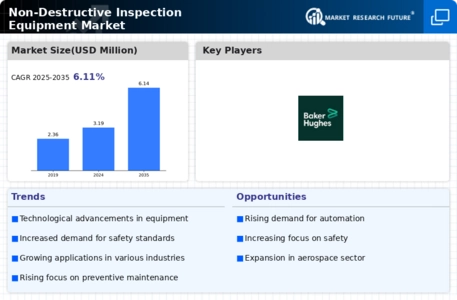

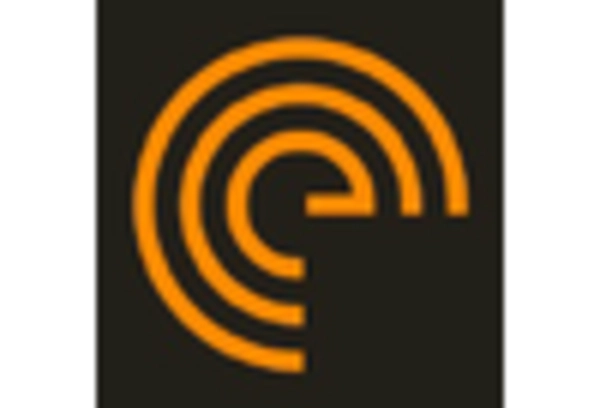

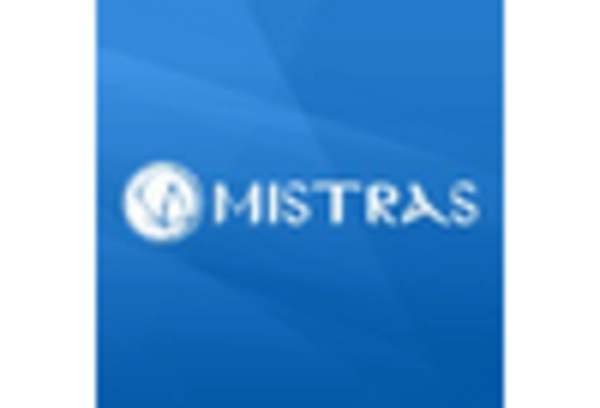
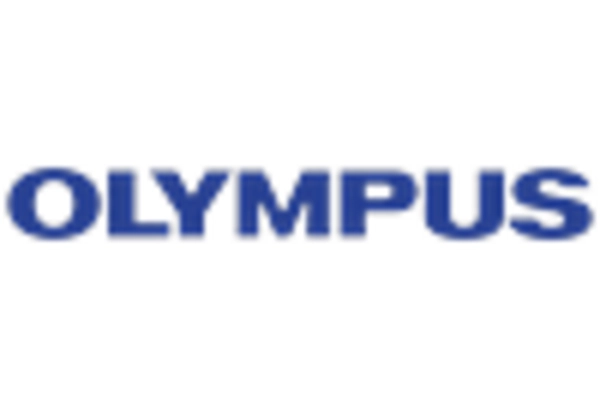

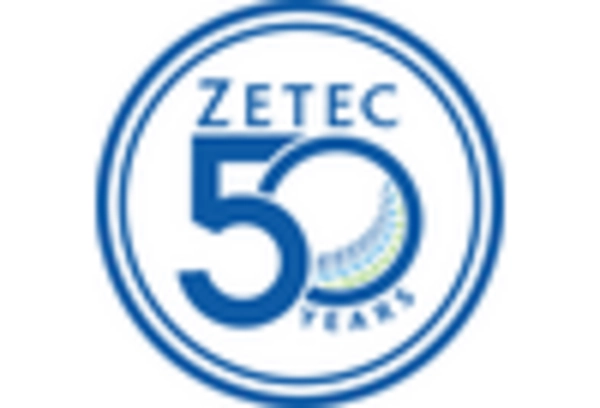

Leave a Comment